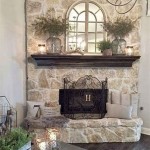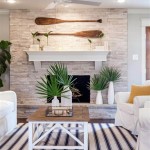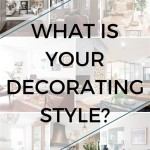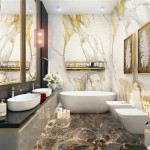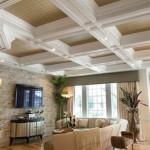Embracing the Allure: Middle East Inspired Home Decor
Middle Eastern design, with its rich history and diverse influences, provides a captivating source of inspiration for home decor. It's a style characterized by intricate patterns, warm colors, luxurious textures, and a strong connection to nature. Incorporating elements of this aesthetic can imbue a home with a sense of opulence, comfort, and cultural richness. This article will explore key components of Middle East inspired home decor, offering insights into how to effectively integrate these elements into various living spaces.
The architectural heritage of the Middle East, spanning from the Ottoman Empire to the Moorish influences of North Africa, provides a foundation for understanding the decorative principles. Aspects like the incorporation of arches, domes, and courtyards, while not always directly transferable to modern homes, inform the overall design sensibility. These architectural features often create a sense of spaciousness, privacy, and a connection to the outdoors.
Color palettes in Middle Eastern design often draw inspiration from the natural environment. Earthy tones like terracotta, sand, and ochre are common, reflecting the desert landscape. These are frequently contrasted with vibrant jewel tones such as sapphire blue, emerald green, ruby red, and gold, which evoke a sense of luxury and royalty. The interplay between these warm and rich colors creates a visually stimulating and inviting atmosphere.
Textiles and Patterns: The Heart of Middle Eastern Decor
Textiles and patterns play a particularly important role in Middle Eastern inspired interiors. Intricate geometric patterns, arabesques, and floral motifs are frequently used on rugs, cushions, tapestries, and wall coverings. These patterns often have symbolic significance, reflecting cultural traditions and beliefs. The use of these patterns adds depth and visual interest to a space, creating a layered and dynamic effect.
Rugs are arguably the most recognizable element of Middle Eastern decor. Persian rugs, known for their intricate designs and high quality craftsmanship, are a classic choice. However, other types of rugs, such as kilims and dhurries, can also be used to achieve a similar effect. These rugs are often placed centrally in a room, serving as a visual anchor and defining the space.
Cushions are another essential element in creating a comfortable and inviting atmosphere. Scatter cushions in a variety of shapes, sizes, and textures can be layered on sofas, chairs, and even the floor. The use of rich fabrics such as silk, velvet, and brocade adds a touch of luxury and opulence. Embroidery, beading, and other embellishments can further enhance the visual appeal of these cushions.
Wall coverings, such as tapestries and decorative panels, can also be used to add texture and visual interest to a room. These can range from simple geometric designs to more elaborate scenes depicting historical events or natural landscapes. Alternatively, textured paint or stucco finishes can be used to create a subtle yet impactful effect.
Furniture and Lighting: Crafting an Authentic Ambiance
Furniture in Middle Eastern inspired homes often features low seating arrangements, reflecting a tradition of gathering and socializing on the floor. Sofas and chairs are typically upholstered in rich fabrics and adorned with cushions. Low tables and ottomans are used for serving refreshments and providing additional seating. The use of carved wood and inlaid mother-of-pearl adds a touch of elegance and sophistication.
Metalwork is another important aspect of Middle Eastern furniture design. Intricate metal screens, lanterns, and decorative accents are often used to add a touch of exoticism and visual interest. These metal elements can be incorporated into furniture pieces, such as coffee tables and side tables, or used as standalone decorative objects.
Lighting plays a crucial role in creating the desired ambiance. Layered lighting, consisting of ambient, task, and accent lighting, is often used to create a warm and inviting atmosphere. Lanterns, lamps, and chandeliers with intricate metalwork or colored glass are commonly used to cast a soft and diffused light. Candles and oil lamps can also be used to add a touch of romance and authenticity.
Ambient lighting can be achieved through the use of recessed lighting or chandeliers that cast a warm glow throughout the room. Task lighting, such as table lamps or floor lamps, can be used to provide focused light for reading or other activities. Accent lighting can be used to highlight artwork or architectural features.
Decorative Accessories: Adding the Finishing Touches
Decorative accessories are essential for completing the Middle Eastern inspired look. These accessories can include items such as ceramics, pottery, metalware, and glassware. These items are often handcrafted and feature intricate designs and vibrant colors. Displaying these accessories in strategic locations throughout the room can add a touch of personality and cultural richness.
Ceramics and pottery are commonly used as decorative objects and functional items. Hand-painted bowls, plates, and vases can be displayed on shelves, tables, or mantels. These items often feature geometric patterns, floral motifs, or calligraphic inscriptions. The use of vibrant colors and intricate designs adds a touch of visual interest and cultural authenticity.
Metalware, such as trays, teapots, and incense burners, is another important element of Middle Eastern decor. These items are often made of brass, copper, or silver and feature intricate engravings or embossed designs. The use of metalware adds a touch of elegance and sophistication to the space.
Glassware, such as colored glass vases and lanterns, can also be used to add a touch of visual interest and warmth. Stained glass windows or panels can be incorporated into the architecture of the home to create a dramatic effect. The use of colored glass can cast a vibrant and colorful light throughout the room.
Plants and natural elements can also be incorporated into Middle Eastern inspired decor. Potted plants, such as olive trees, palms, and succulents, can be used to add a touch of greenery and freshness to the space. Natural materials, such as wood, stone, and leather, can also be used to create a connection to the natural environment.
Fragrances are also an important element of Middle Eastern culture and can be used to enhance the ambiance of a home. Incense, essential oils, and scented candles can be used to create a warm and inviting atmosphere. Popular scents include oud, sandalwood, rose, and jasmine.
Ultimately, successfully incorporating Middle Eastern inspired decor involves a thoughtful layering of textures, patterns, and colors. It requires attention to detail and a willingness to embrace the opulence and richness of the culture. The goal is to create a space that is both visually stunning and deeply inviting, reflecting the warmth and hospitality associated with the Middle East.
It's important to remember that authentic Middle Eastern design varies greatly from region to region. From the vibrant souks of Morocco to the sophisticated elegance of Persian palaces, each area boasts its unique characteristics. When incorporating these elements into a home, it's wise to research and select a specific regional style that resonates with one's personal taste and architectural context.
While the opulence and grandeur can be captivating, it’s also essential to consider practicality and functionality. Modern interpretations of Middle Eastern design often involve streamlining the aesthetic, incorporating contemporary furniture and layouts while retaining key elements such as patterns, colors, and textures. This creates a harmonious blend of tradition and modernity, resulting in a space that is both beautiful and livable.

Middle Eastern Diy Home Décor Ideas

Middle Eastern Diy Home Décor Ideas

Middle Eastern Diy Home Décor Ideas

Middle Eastern Interior Design Trends And Home Decorating Ideas Decor Asian

Middle Eastern Motifs In Interior Design

5 Modern Interior Design Tips To Create The Perfect Middle Eastern Des

Middle Eastern Interior Design Trends And Home Decorating Ideas Asian Decor

Middle Eastern Interior Design Trends And Home Decorating Ideas Tribeca Loft

370 Best Middle Eastern Decorating Style Ideas Design Moroccan Interiors

Pin On Dream Home Ideas

